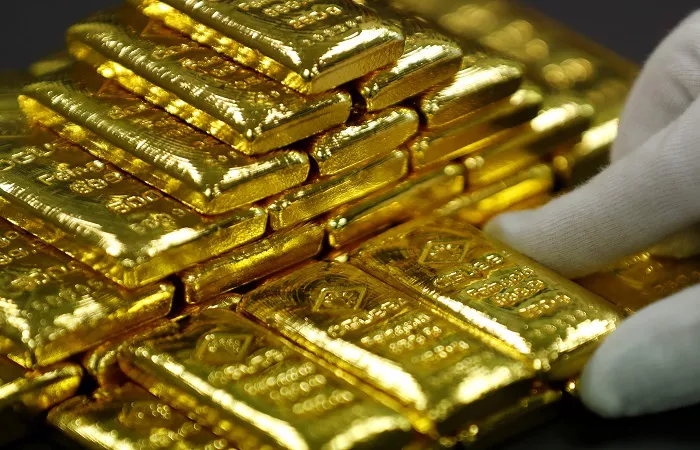Gold prices slipped on Monday, May 12, following positive signals from US-China trade talks, which eased market fears and led investors to move away from safe-haven assets like gold in favor of riskier investments. Spot gold fell 1.4% to $3,277.68 per ounce, while US gold futures dropped 1.9%, trading at $3,281.40 per ounce.
In India, gold prices are as follows: ₹9,688 per gram for 24-karat gold, ₹8,880 per gram for 22-karat gold, and ₹7,266 per gram for 18-karat gold (999 gold), according to data from Goodreturns.
The drop in gold prices can be attributed to the optimism surrounding the US-China trade talks. Over the weekend, US and Chinese officials met in Switzerland, with the talks concluding positively. US officials highlighted a deal aimed at reducing the US trade deficit, while Chinese officials reported reaching an “important consensus.”
Chinese Vice Premier He Lifeng confirmed that a joint statement would be released in Geneva on Monday (May 12). The trade discussions marked progress in resolving tensions that had intensified over recent months, including the imposition of high tariffs between the two countries, which had sparked fears of a global recession.
This shift in sentiment weakened the demand for gold, which is traditionally viewed as a hedge against economic and political uncertainty. Additionally, the strength of the US dollar added to the downward pressure on gold. As the dollar advanced due to the positive trade news, gold became less attractive to investors holding other currencies.
Experts suggest that gold may continue to face downward pressure in the short term. Jigar Trivedi, senior commodity analyst at Reliance Securities, believes that with reduced geopolitical risks and a stronger dollar, gold could decline further, potentially reaching $3,200 per ounce.
Investors are also waiting for key US economic data, including the Consumer Price Index (CPI) on Tuesday, which could provide fresh insights into the Federal Reserve’s monetary policy outlook.
While the short-term outlook for gold is dampened by a stronger dollar and reduced geopolitical risks, gold remains a valuable hedge against economic instability over the long term. If the Federal Reserve signals a more dovish policy or if geopolitical tensions rise again, gold may see renewed demand.
Related topics:
- India Surpasses China in Gold Purchases, Buying 51% More in Three Months
- Qilu Bank Enhances Support for Small Businesses with Innovative Financial Tools
- Bitcoin Poised for a Surge Amid Gold’s Delivery Delays, Expert Claims


